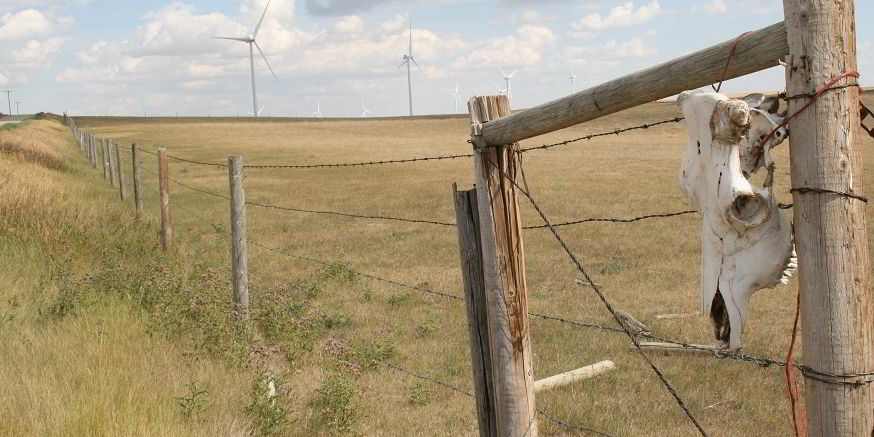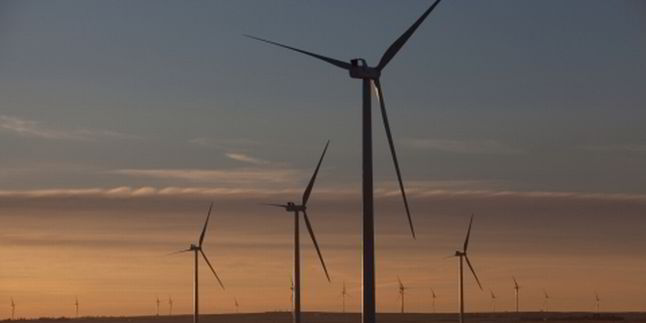DISPATCHES: Every trade conference strives to book interesting speakers, but few come ready to deliver truly industry-shaping news.
Shannon Phillips, Alberta’s scrappy 41-year-old environment minister, knew she had the goods when she came to the Canadian Wind Energy Association’s annual conference earlier this month to reveal the details of how the province plans to reach its 30% renewables target for 2030.
Alberta’s target – like Phillips’ political career – was launched last year when the left-leaning New Democratic Party swept to power in a political earthquake that ended 80 years of conservative rule in Canada’s largest oil-producing province.
Phillips had the wind industry eating out of her hand as she outlined plans to hold an initial 400MW technology-agnostic renewables tender in 2017, to be followed with regular tenders through the end of next decade.
There’s nothing unusual these days in fossil-fuel-producing regions taking advantage of their renewables resources, Phillips noted, with wind now accounting for 12% of Texas’ in-state power generation. “That’s double Alberta – for now,” she said.
The embrace of renewables in Alberta, home of Canada’s notorious oil sands, is important symbolically — but it also carries big practical consequences for the North American wind market.
Alberta’s target will require 5GW of new renewables capacity, or around 450MW each year from 2019. For context Ontario, Canada’s largest wind market, has 4.5GW installed today; Iowa, the second largest US market, added about 520MW last year.
Adding to the momentum in western Canada, neighbouring Saskatchewan, a conservative-minded province of 1.1 million people, has established a 50% renewable power target for 2030 — calling for 1.6GW of new wind.
Put together, “that’s a really strong pipeline”, David Hickey, vice president for wind and renewables at Siemens Canada, tells Recharge. “This gives the industry something to focus on here in Canada.”
Even on their own, the emergence of the Alberta and Saskatchewan wind markets would attract big interest. But timed as they are with the collapse of the historically key wind markets in Ontario and Quebec, they are a godsend for Canada’s wind industry.
Quite often it pays to be a follower in the world of renewables, and so it is likely to be with western Canada, which stands to benefit from lessons learned and technologies streamlined in other provinces.
Since Alberta first sketched out its 2030 target last year, “global-scale” renewables developers have been pouring into the province, says Grant Arnold, chief executive of Calgary-based developer BluEarth Renewables, which plans to bid its 78MW Hand Hills wind project into an upcoming tender.
Among other developers likely to compete in Alberta’s tenders are global powerhouses like EDF-EN, RES, Engie and Pattern Development, as well as Canadian leaders like BluEarth and Innergex.
Furthermore, thanks to its role as the de facto capital of Canada’s huge energy industry, Alberta is in the unique position of already playing host to many of Canada’s largest renewables players — in spite of not having had much of a local market.
The two largest owners of Canadian wind capacity, TransAlta and Enbridge, are headquartered in Calgary, as are other fossil-fuel giants with growing renewables businesses like TransCanada and Suncor.
“The rate payers of Alberta should be looking forward to this, because it’s going to be an extremely competitive market,” Arnold tells Recharge.
Local supply chain, and the solar wild card
The lift-off of wind energy in western Canada has the potential to scramble the country’s turbine market, the logistics of which were largely set up to serve Ontario and Quebec. Last year Siemens, which has a blade plant in Ontario, commanded a 50% share of the Canadian turbine market, followed by GE and Senvion.
But no one doubts that Alberta has the infrastructure and engineering chops to pull off a big and efficient wind market.
“It’s a little less clear to me how the technology side — the component side — is going to shake out in Alberta,” says Colin Edwards, Pattern’s vice president for development in Canada. “But as far as the rest of the supply chain goes, this is a dream place to build.”
“There are very talented constructors and machinists in Alberta, and there’s great labour that’s available,” Edwards tells Recharge.
One important wild card in Alberta is solar, which some developers believe could compete with wind much sooner and more intensely than many currently imagine.
“The solar resource is tremendous in Alberta,” says BluEarth’s Arnold, whose company is currently permitting about 40MW of utility-scale solar projects in the province and has a number of earlier-stage developments in its pipeline.
“It would be a great resource to mix into grid with wind as coal comes off,” Arnold says. “We believe solar will be here, and we’ve started a lot of work because of that.”
In Dispatches, Recharge journalists offer a personal insight into the issues shaping the development of renewable energy around the world.




